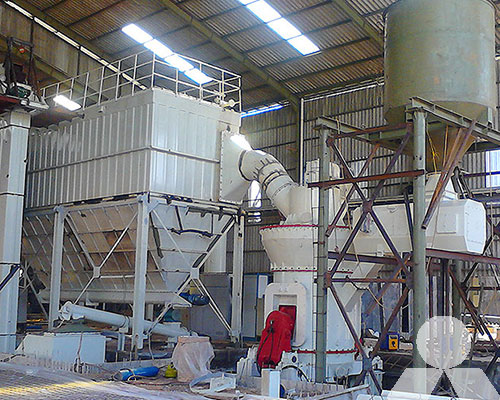30 tons vertical mill applied in ore powder production line
A 30-ton vertical mill is a large industrial machine commonly used in various industrial applications, including ore powder production lines. This type of mill is designed to grind and process various materials, including minerals, ores, and other powders.

In an ore powder production line, the vertical mill plays a critical role in reducing the raw ore or mineral into a finer powder form. The process typically involves the following steps:
- Crushing: The raw ore is first crushed into smaller pieces to facilitate further processing. This step may involve the use of crushers or other size reduction equipment.
- Grinding: The crushed ore is then fed into the vertical mill, where it is subjected to grinding. The mill’s large rotating grinding table and rollers crush and grind the ore, breaking it down into a fine powder.
- Classifying: After grinding, the ore powder may be sorted or classified based on particle size. This step ensures that the desired fineness of the powder is achieved.
- Collection: The final product, the ore powder, is collected and stored in containers or silos for further use or transportation.
Advantages of using a vertical mill in an ore powder production line include:
- High Efficiency: Vertical mills have a higher grinding efficiency compared to traditional ball mills or horizontal mills. This efficiency is mainly due to the vertical arrangement of the grinding components.
- Space-saving: Vertical mills have a smaller footprint, making them suitable for applications where space is limited.
- Flexibility: Vertical mills can handle various types of materials and are adaptable to different ore types, ensuring versatility in the production process.
- Energy-saving: Vertical mills are generally more energy-efficient than traditional grinding mills, leading to cost savings in the long run.
It’s important to note that the specific design and capacity of the vertical mill used in an ore powder production line may vary depending on the requirements of the process and the characteristics of the raw materials being processed. Additionally, safety measures and regular maintenance are essential to ensure the smooth operation of the mill and to optimize its performance in the production process.









